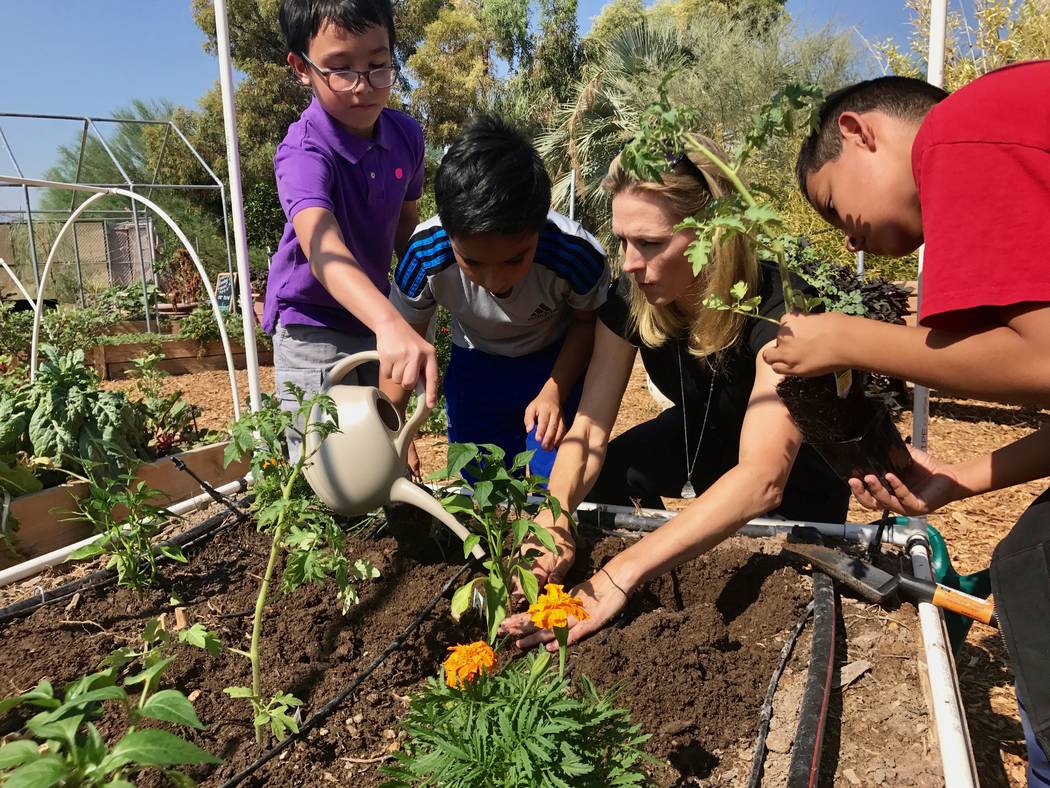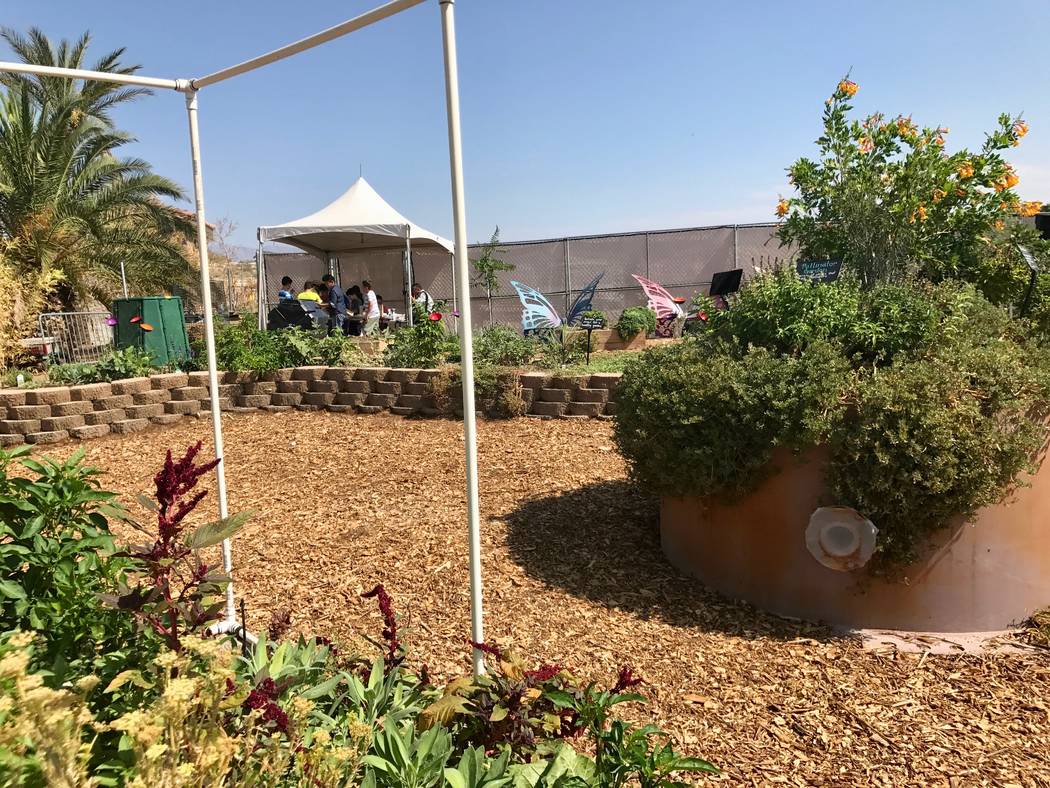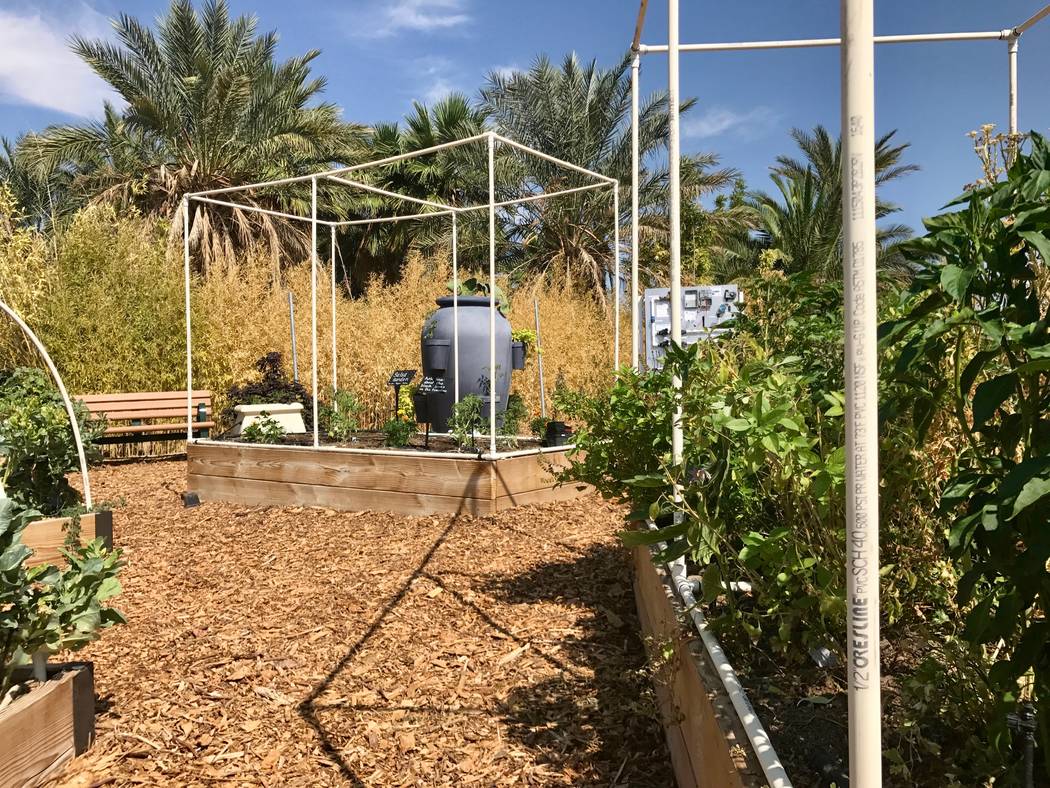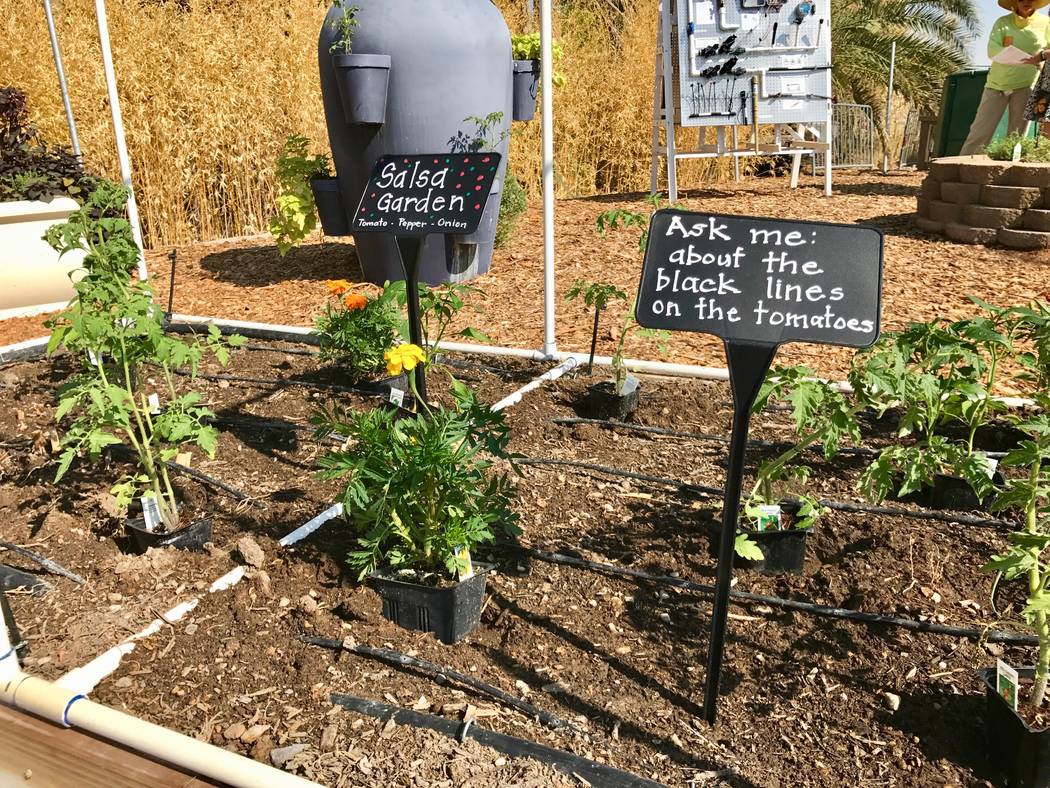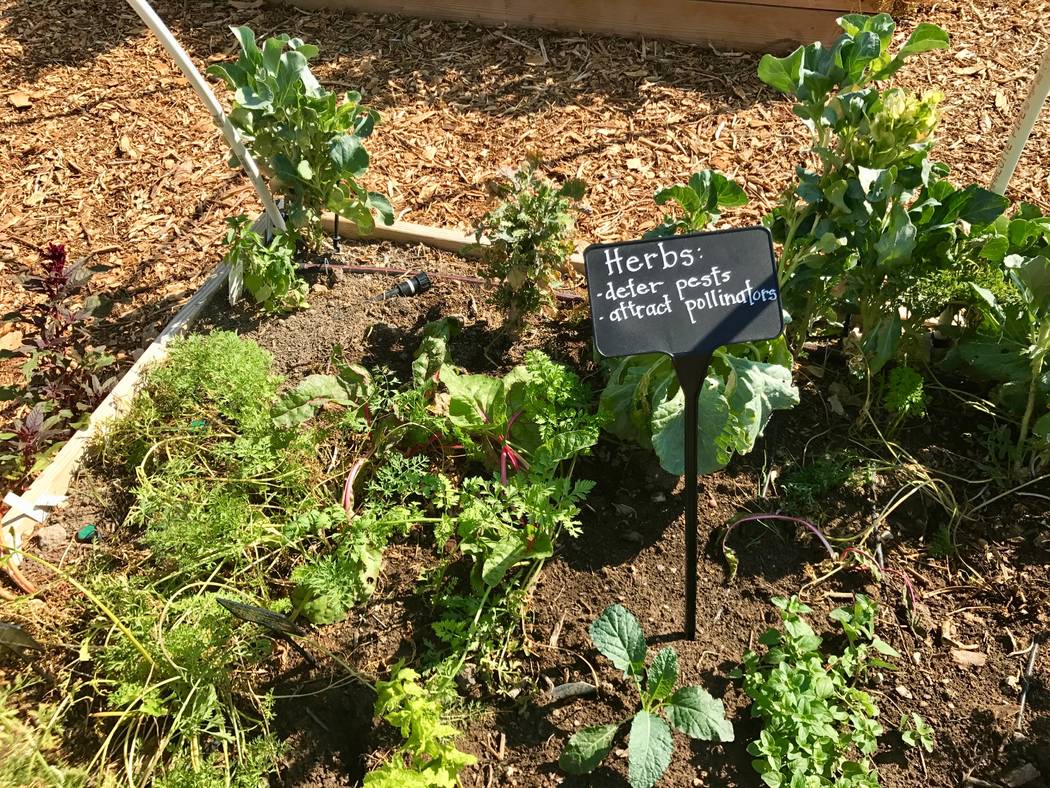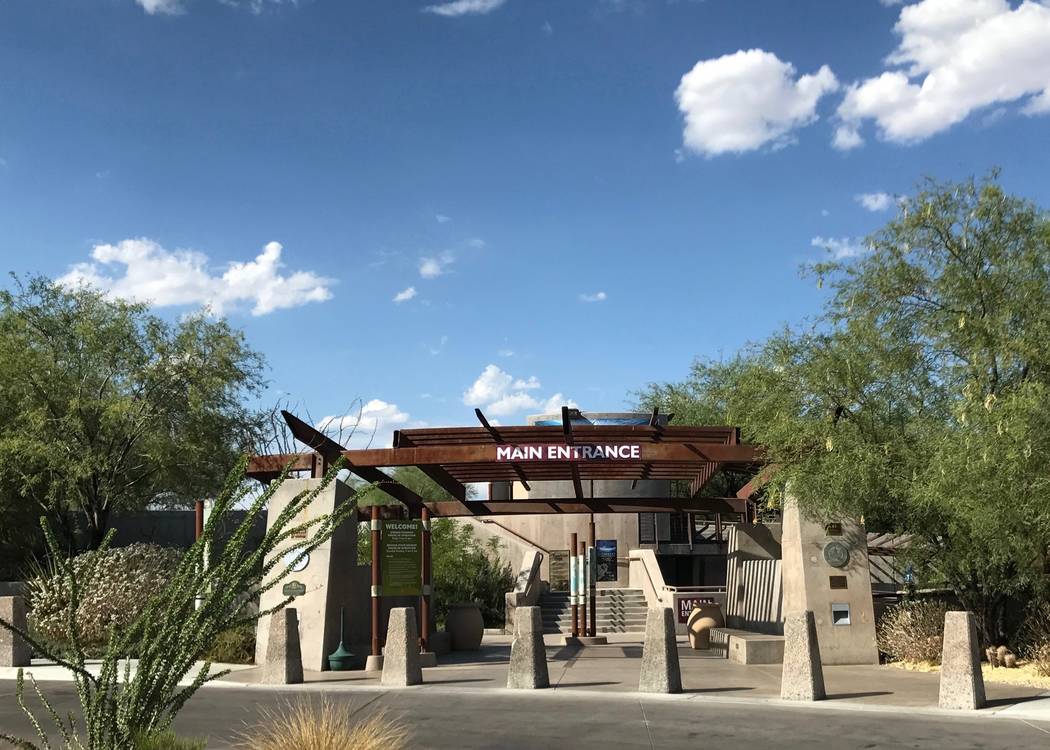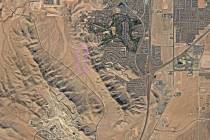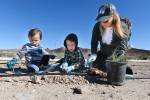Springs Preserve teaching garden has courses for kids, adults
As more than 120 schools in the Las Vegas Valley have added gardens to their campuses in an effort to teach science, nutrition and culinary arts, the Springs Preserve has jumped on the bandwagon.
The preserve opened its teaching garden in early September, in the southeast corner of the 180-acre site. Classes have included a youth-gardening series for children 6 to 12 and a six-week series for adults. The adult class, which lasts through mid-October, focuses on creating a garden from the ground up. The class is approved for professional development credit for Clark County School District teachers.
While access to the teaching garden is free and open to the public, visits must be scheduled.
The garden was made possible by a $100,000 grant from The Rogers Foundation, a Las Vegas nonprofit that supports education initiatives.
One garden bed is a “salsa garden” and contains tomatoes, peppers and onions. Another bed features corn, beans and squash, known as the “three sisters.” The plants support one another’s growth: the corn plant supports the bean vine, the beans store nitrogen from the air and the squash cools the soil and traps moisture.
Herbs and flowering plants throughout the garden attract crucial pollinating insects such as butterflies, beetles, bees and birds.
Springs Preserve staff members hope that the programs will help promote gardening in Las Vegas.
“Most of the information online (about gardening) pertains to other areas of the country. The desert is very specific,” said botanical gardens supervisor Brandi Eide. You shouldn’t plant things in June that you would in the rest of the country, she said.
Instead, gardeners have two shortened seasons to work in: “Mostly you want a short crop that matures before it’s too cold in the winter and matures before before it’s too hot in the summer,” Eide said.
“It’s all about the soil,” education specialist Cindy Dixon said. Desert soil often lacks crucial nutrients, she said, but adding compost and mulch can help. Timing and selecting the right plants is also important.
The garden area’s original soil was “like working on concrete,” Eide said, and heavy machinery had to be brought in to break it up.
“It’s a whole new ecosystem where there wasn’t any life before,” Eide said, “… and now it’s this vibrant area where we see all kinds of pollinators and insects and herbs.”
Dixon said that the garden will be open for school field trips, and the preserve provides pre- and post-trip activities that teachers can incorporate into curriculum.
“And then hopefully we’ll just be a resource (for home gardeners),” Dixon said.
Contact Madelyn Reese at mreese@viewnews.com or 702-383-0497. Follow @MadelynGReese on Twitter.
Upcoming classes at the Springs Preserve
Oct. 5: Gardening in Small Places (6-8 p.m.); $12 for members or $15 for nonmembers
Oct. 11, 18 and 25: Youth Garden Series "How's it Growing?" (10 a.m.-noon for ages 6-8 and 1-3 p.m. for ages 9-12); $24 for members or $30 for nonmembers for three classes
Oct. 21: Composting (8-10 a.m.); $12 for members or $15 for nonmembers
Nov. 1, 8 and 15: Youth Garden Series "The Seed-y Side of the Garden" (10 a.m. for ages 6-8 and 1-3 p.m. for ages 9-12); $24 for members or $30 for nonmembers for three classes
For more information, call 702-822-7700 or visit springspreserve.org.



